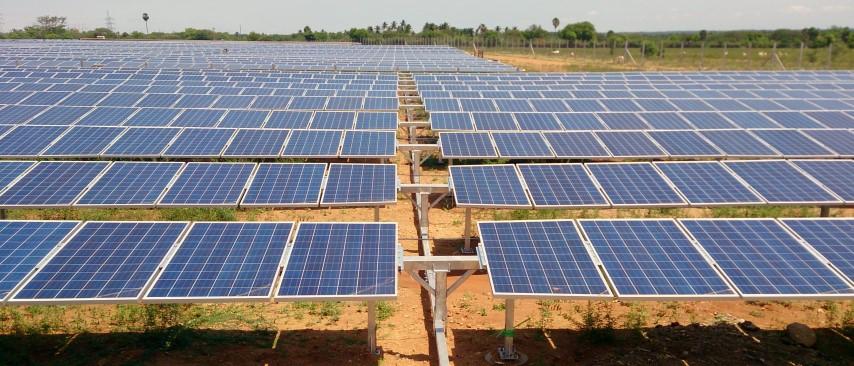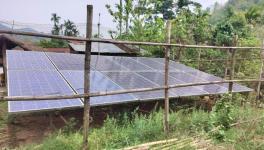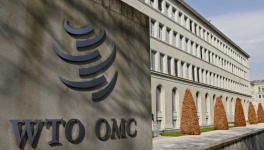US-WTO Shadow on India’s Solar Power Plans
Last week a Panel set up by the WTO’s Dispute Settlement Body ruled against India on a complaint by the US in early 2013 that India’s Domestic Content Requirement (DCR) for some solar power projects violated WTO prohibitions on measures that result in “less favourable treatment” of international trade partners. The Panel was ruling on an appeal by India in response to the original injunction in August 2015 and essentially reiterated the WTO’s previous decision.
Under the Jawaharlal Nehru National Solar Mission (JNNSM) launched in India in 2010, one of several technology missions conceived as part of the National Action Plan on Climate Change, 20 Giga Watts (1 GW = 1,000 MW)) of solar power generating capacity was targeted by 2020, later dramatically ramped up in 2014 by the Modi government to 100GW by 2022. (Incidentally, the same target has anomalously been retained in India’s target for 2030 announced for the Paris climate summit.) The Mission called for a certain percentage of this installed capacity to be based on domestically made Solar Photovoltaic (SPV) modules, this percentage declining batch-wise from 50 percent to 10 percent. It was this provision that the US had objected to and, when negotiations with India broke down, lodged a complaint with the WTO.

Image Courtesy: en.wikipedia.org
WTO vs Climate As expected, and with ample justification, the ruling was greeted with outrage by environmentalist and other civil society groups both in India and abroad. Coming as it did just a few weeks after the Paris Agreement on Climate Change, when developed countries led by the US were self-righteously exhorting developing countries like India to reduce emissions through various measures including adoption of renewable energy despite its higher cost, the hypocrisy of the US action in penalizing India for promoting the twin goals of renewable energy and boosting job creation could not be missed. Especially since US President Barack Obama was vigorously patting himself on the back for doing just that in the USA’s recently announced clean energy plan! And even more so when 13 States in the US have policies designed to promote local manufacture of renewable energy generating hardware.
This hypocrisy is not new, of course. While international climate negotiations have on the one hand been characterized by debates loaded with moralizing appeals by developed countries to others to reduce emissions, supposedly linked issues of technology transfer and economic development were kept within strict if unwritten boundaries drawn by these same nations so as to zealously protect their own economic interests in particular and those of global capital in general. For several years now, the so-called “green economy” which was supposed to provide a win-win framework and incentivize developing countries to adopt low-emission technologies has run up against all kinds of barriers at WTO and other bilateral and international fora. The WTO is undoubtedly working at cross-purposes with the UNFCCC and the Sustainable Development Goals which support an approach of simultaneously pursuing multiple objectives of reducing emissions, promoting jobs and income creation, and improving local environment and health. Ostensibly “free-market” trade is increasingly being used as a trump card against environment-friendly and sustainable development.
There have, of course, also been voices arguing in favour of the WTO ruling, mainly on grounds of supposed market distortions and related cost inefficiencies but also that emission reduction goals would be adversely affected by biases favouring less effective technologies. Such commentary could easily be dismissed as standard neo-liberal arguments. However, as will be argued below, DCR is not always or necessarily the best option and there can indeed be other ways of achieving the desired objectives.
In the context of local content requirement as a tool to promote renewable energy and the domestic “green economy,” India is not alone in facing such a WTO ruling. The Canadian province of Ontario had a similar provision struck down in 2013 by the WTO on a complaint by Japan and the EU. The adverse ruling against India therefore did not come as a surprise at all, and one should indeed ask why this outcome was not anticipated by the Indian government and why alternative avenues towards the desired goals, as adopted by many countries including the US, were not explored.
Small impact on target It is interesting to note that, although the WTO ruling has come as a rude shock both here and abroad, and is sure to be appealed again by India, the actual impact on India’s solar power generation capacity is actually quite small.
The JNNSM was launched with the objectives of reducing the cost of solar power generation through long-term policy, R&D, and domestic production of raw materials and components towards establishing India as a “global leader” in solar energy.
Towards this end, the Mission had announced that 10 percent of the targeted installed capacity must use domestically made modules and auctions would be conducted in this manner. Of the total targeted 100 GW, the current short-term target to be achieved by 2017 is 29,000 MW. Out of this, in the present phase of the work, 50 percent in Batch 1 of 750 MW was to conform to DCR, 33 percent of 1,500 MW in Batch 2, and a mere 10 percent of 2,000 MW in Batch 3, making a total of 1,075 MW or just 3.7 percent of the target!
In the solar power industry, there are broadly two interest groups, namely power project developer, i.e. those who set up power plants, and those who manufacture the raw silicon, the solar cells and the panel or thin film modules. Both these groups have so far worked against each other. The Government’s policies have also not addressed several structural factors in Indian industry and related policy frameworks. In many ways, even more than the US complaint or the WTO ruling, it is this conflict of interests, and the continued neglect of these and other related factors in the Government’s solar energy policy, which also needs attention if India is serious about becoming a “world leader” in this sector. The US and other nations are fishing in these troubled waters.
Weak Indian industrial policy Project developers want least cost modules which they feel domestic module manufacturers are unable to supply. Many overseas manufacturers sell modules at very low prices which many regard as dumping. While China is most often mentioned, the US too is notorious for low pricing made possible by all manner of subsidies from the US government at home. US based financial institutions as well as Exim Bank also provide cheap loans on condition that US-made modules or components are bought. Apart from the obvious market distortion, this has also caused several other problems for the development of a manufacturing base in India.
For one, project developers in India have been importing thin films in large quantities including from the US. Part of this is due to glaring regulatory gaps and loopholes. While the Mission has prescribed DCR, concerned State Governments such as Rajasthan, Gujarat and Tamil Nadu have no such provision! And thin films are actually exempt too! As a result, India is almost the only country where thin films have higher market share than crystalline silicon used to make panels! Excess capacity for thin films in the US, EU and China due to falling global demand has resulted in these countries or regions pushing exports through soft loans and linked conditionalities.
For their part, manufacturers have shown little zeal or enthusiasm for expanding the production base. Installed capacity at present is a meager 1,400 MW for solar cells and 2,700 MW approximately for modules. And India produces zero poly-silicon. Various industrial projects are languishing at different stages, despite substantial government budgetary support but with poor follow-up. Plants supported for making silicon wafers and importing instead, and making IC chips from them! The only significant capacity for making wafers are in the public sector with SCL, CEL, BEL and BHEL but with no support from government which ahs also shown little interest in rejuvenating this highly under-utilized capability.
While the present government tom-toms its support for its ‘Make in India’ programme to boost the manufacturing sector in India, India’s seemingly never-ending dependence on imports in solar energy technology and materials, which are often the same as used in the burgeoning electronics industry as well, is baffling to say the least. India’s electronic imports are the second highest, next only to defence. Both are shameful. Both also reflect the mournful fact that the ecosystem and government support for manufacturing in India are in fact in terrible shape. Add to this the fact that Indian corporate houses prefer easier imports or assembly to manufacturing makes for a bleak future scenario.
The US and the WTO are nasty, and everyone knows that. It is time India also looks into a mirror.
Disclaimer: The views expressed here are the author's personal views, and do not necessarily represent the views of Newsclick
Get the latest reports & analysis with people's perspective on Protests, movements & deep analytical videos, discussions of the current affairs in your Telegram app. Subscribe to NewsClick's Telegram channel & get Real-Time updates on stories, as they get published on our website.
























